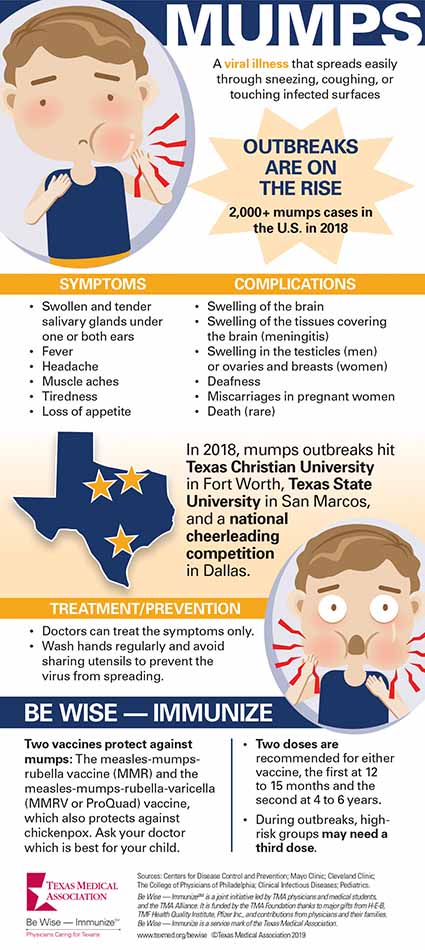Mumps spreads easily through sneezing and coughing, or just touching infected surfaces. A vaccine, first introduced in 1967, reduced U.S. cases by 99 percent, according to the Centers for Disease Control and Prevention (CDC).
However, mumps still can spread among vaccinated groups, a sign that immunity may wear off for some people as they get older, according to a 2018 article in Clinical Infectious Diseases. Most outbreaks take place in close-contact settings, especially among college-age kids who tend to live in dormitories, play sports together, kiss acquaintances, and share cups and cigarettes.
More than 2,000 U.S. mumps cases occurred in 2018. That’s down from 6,000-plus cases CDC reported in both 2016 and 2017, but a far cry from the hundreds reported in 2012.
Texas is not immune. In 2018, mumps outbreaks occurred at Texas Christian University in Fort Worth, Texas State University in San Marcos, and a national cheerleading competition in Dallas.
Mumps still spreads much faster and more dangerously among unvaccinated groups, and immunization remains the best protection. CDC recommends children get two doses of the vaccine (MMR), which also guards against measles and rubella, and can include chickenpox (MMRV). Unvaccinated adults and college-age students also can receive the vaccine, and during outbreaks, high-risk groups may need a third dose.
Download a printable copy of the infographic below.

Tex Med. 2019;115(3):47
March 2019 Texas Medicine Contents
Texas Medicine Main Page